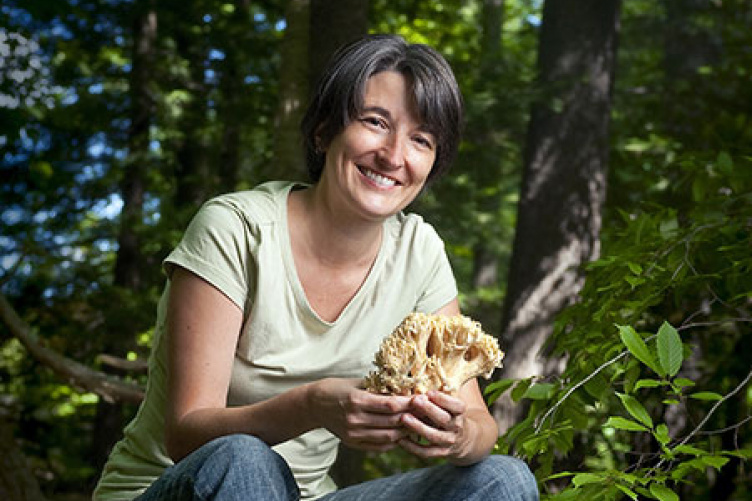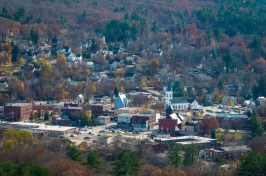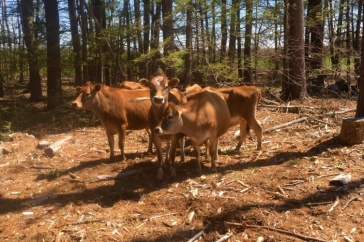
Serita Frey, professor of natural resources at the University of New Hampshire
Thanks to the past year’s wild weather, we’re all aware of the impact of climate change on humans and our built environment – homes, roads, rivers, farms, bridges. A new paper in the journal Nature Climate Change looks at its impact on soils.
UNH’s Serita Frey aims to answer the next burning question facing our warming planet: What about the dirt?
Go ahead and chuckle, but the impact of climate change on soil microorganisms is no joke, Frey says. Activities of soil microorganisms – bacteria and some fungi – release 10 times the carbon dioxide that human activities do on a yearly basis. Historically, this release of carbon dioxide has been kept in check by plants’ uptake of the gas from the atmosphere. However, human activities are potentially upsetting this balance.
In a study published this month in the prestigious journal Nature Climate Change, Frey, professor of natural resources and the environment, finds that warmer temperatures due to climate change could cause soils to release additional carbon into the atmosphere, thereby enhancing climate change – but that effect diminishes over the long term. The study sheds new light on how soil microorganisms respond to temperature and could improve predictions of how climate warming will affect the carbon dioxide flux from soils.
Frey and co-authors Johan Six and Juhwan Lee of the University of California Davis and Jerry Melillo of the Marine Biological Laboratory were curious how increased temperatures due to climate change might alter the amount of carbon released from soils. “While they’re low on the charisma scale, soil microorganisms are so critically important to the carbon balance of the atmosphere,” Frey says. “If we warm the soil due to climate warming, are we going to fundamentally alter the flux of carbon into the atmosphere in a way that is going to feed back to enhance climate change?”
Yes, the researchers found. And no.
The study examined the efficiency of soil organisms – how completely they utilize food sources to maintain their cellular machinery – depending upon the food source and the temperature under two different scenarios. In the first short-term scenario, these researchers found that warming temperatures had little effect on soils’ ability to use glucose, a simple food source released from the roots of plants. For phenol, a more complex food source common in decomposing wood or leaves, soils showed a 60 percent drop in efficiency at higher temperatures.
“As you increase temperature, you decrease the efficiency – soil microorganisms release more carbon dioxide to the atmosphere – but only for the more complex food sources,” Frey explains. “You could infer that as the soil warms, more carbon dioxide will be released into the atmosphere, exacerbating the climate problem.”
That effect diminishes, however, in the second scenario, in which soils were warmed to 5 degrees Celsius above the ambient temperature for 18 years. “When the soil was heated to simulate climate warming, we saw a change in the community to be more efficient in the longer term,” Frey says, lessening the amount of carbon dioxide the soils release into the atmosphere and, in turn, their impact on the climate. “The positive feedback response may not be as strong as we originally predicted.”
|
Watch Frey describe her research in this COLSA-produced video. |
Frey and her colleagues hypothesize that long-term warming may change the community of soil microorganisms so that it becomes more efficient. Organism adaptation, change in the species that comprise the soils, and/or changes in the availability of various nutrients could result in this increased efficiency.
This study was based on work done at the Harvard Forest Long-Term Ecological Research site in Petersham, Mass., where Frey and Melillo have been warming two sites – one 9 meters square, the other 36 meters square -- with underground cables for two versus 18 years. “It’s like having a heating blanket under the forest floor,” Frey says, “allowing us to examine how this particular environmental change—long-term soil warming—is altering how the soil functions.”
Originally published by:
UNH Today


















































